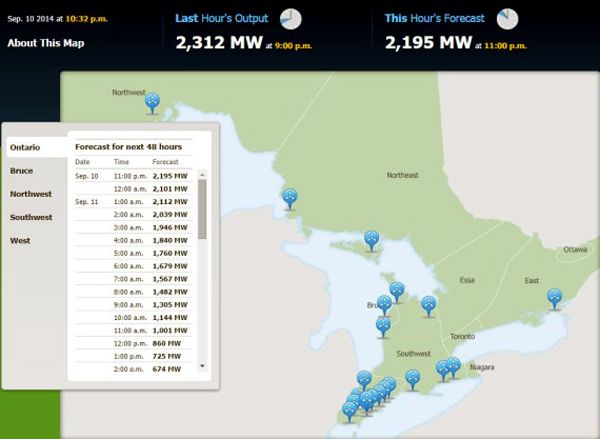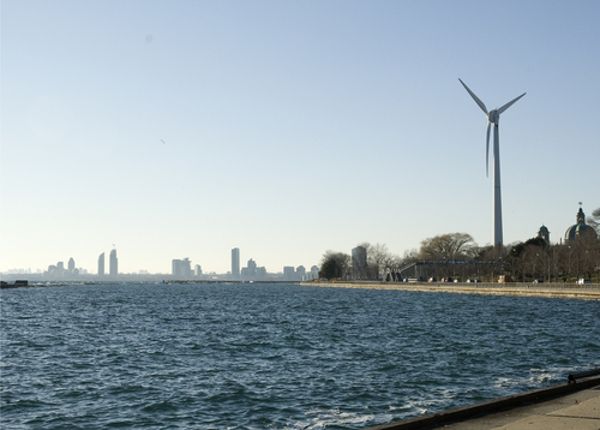

As coal-fired plants have vanished from its landscape, renewable energy has taken off in a big way in Ontario, Canada’s most populous province.
CleanTechnica reports that, with 2,312 megawatts (MW) of wind power, 4,091 MW of hydro and 159 MW from other sources, renewables hit 35 percent of all the energy going into the grid one day this week. That amount will vary, of course, depending on how windy it is on a given day.
CleanTechnica also pointed to a number of projects in development, with wind leading the the way which, when completed, would produce a total of almost 5,000 MW of new renewable energy. Together with existing sources, they could meet almost half the province’s demand.
The surge was undoubtedly pushed by Ontario’s aggressive drive to eliminate coal-fired power plants. Its Nanticoke Generating Station, the largest in North America and Canada’s largest source of greenhouse emissions, closed last year. The Thunder Bay Power Station, its last coal-burning plant, closed in April, making the province entirely coal-free. It was ahead of its target by nearly eight months. And it was ahead of a goal of 2015 announced in 2002 by over a year.

“Ontario is now the first jurisdiction in North America to fully eliminate coal as a source of electricity generation,” a press release from its Ministry of Energy said when Thunder Bay closed.
“The plant is scheduled to be converted to burn advanced biomass, a renewable fuel source. The province has replaced coal generation with a mix of emission-free electricity sources like nuclear, waterpower, wind and solar, along with lower-emission electricity sources like natural gas and biomass. A coal-free electricity supply mix has led to a significant reduction in harmful emissions, as well as cleaner air and a healthier environment.”
Since 2003, according to the ministry, its coal closure plan has eliminated 30 megatonnes of emissions from Ontario’s environment.
“Getting off coal is the single largest climate change initiative undertaken in North America and is equivalent to taking up to seven million cars off the road,” said Ontario Minister of Energy Bob Chiarelli in announcing the closure.
“Today we celebrate a cleaner future for our children and grandchildren while embracing the environmental benefits that our cleaner energy sources will bring.”
When legislation was announced last November to permanently ban coal, the province’s Minister of the Environment Jim Bradley said, “Coal-fired electricity generation is a major source of health-threatening smog, and of climate-destabilizing carbon dioxide. Our proposed legislation will ensure that dirty coal-fired electricity remains a practice of the past.”
Nuclear energy remains the biggest source of power generation in the province.
YOU MIGHT ALSO LIKE
Wind Energy’s Rise: The Numbers Behind a Milestone-Setting Year
Fact Checking Fossil Fuel Industry’s Attacks on Wind Energy
Did Canada Just Have the Largest Coal Slurry Spill in Its History?

 233k
233k  41k
41k  Subscribe
Subscribe 
